Customs Invoice Template for UPS How to Create and Use It

When shipping goods internationally, having the right paperwork is crucial to ensure smooth customs clearance and avoid any delays or unexpected fees. Proper documentation provides the necessary details about the shipment’s contents, value, and destination, making the process easier for both the sender and the authorities. Without accurate forms, shipments can be held up, resulting in costly delays and frustration.
Using a well-structured shipping form can help streamline the process, ensuring all required information is included and correctly formatted. This reduces the likelihood of mistakes and ensures that your shipments pass through customs efficiently. From listing product descriptions to specifying the total value, each section of the document plays an important role in preventing complications.
Understanding how to create and use this paperwork correctly is essential for businesses and individuals involved in cross-border trade. With the right approach, you can simplify the shipping experience and focus on getting your products to their destination without hassle.
Customs Invoice Template for UPS
When shipping goods internationally, providing accurate and complete shipping documentation is essential for ensuring that your packages move smoothly through customs. The right paperwork can make all the difference in avoiding delays, fines, or even package rejections. Having a structured form for international shipments allows you to clearly communicate the contents, value, and destination of the goods to the relevant authorities.
For global shipments, one of the most reliable ways to ensure compliance is by using a standardized form designed for international shipping. This document collects key details like the description of the goods, their origin, their declared value, and any relevant shipping terms. By filling out this form accurately, you can facilitate the customs clearance process and avoid unnecessary complications.
Key Information to Include
Each form requires specific details to be filled out. These often include:
- Detailed Description of Items: Clearly list what is being shipped, including quantity, material, and intended use.
- Value Declaration: Provide the value of the goods for tax and duty purposes.
- Origin of Goods: Mention where the goods are coming from and whether they are subject to any trade restrictions.
Why Accurate Documentation Matters
Having an accurate and well-organized shipping form is not just about compliance; it can significantly speed up the processing of your packages. Errors, such as missing values or incorrect descriptions, can result in delays at the border, extra charges, or worse–shipment rejection. By using a precise and easy-to-understand document, you ensure a smoother experience for both the shipper and the recipient.
Why Use a Customs Invoice Template
Using a well-structured document for international shipments is essential to streamline the process of moving goods across borders. These forms help ensure that all the necessary information is provided, allowing authorities to assess the contents accurately and efficiently. By relying on a standardized format, shippers can avoid errors and reduce the risk of delays or complications during transit.
When you use a pre-designed form, it guides you to include all the required details, making the paperwork process simpler and faster. This can be especially helpful for businesses that handle frequent cross-border shipments, as it ensures consistency and minimizes the chances of missing crucial information. Additionally, having a template helps you stay organized and avoid confusion when filling out multiple forms for different shipments.
Step-by-Step Guide to UPS Invoice
Filling out the necessary paperwork for international shipments can seem daunting, but following a simple process ensures accuracy and helps avoid delays. By breaking down the steps and clearly understanding the information required, you can ensure smooth shipping and compliance with regulations. This guide will walk you through each stage of completing the required shipping forms.
Step 1: Gather Required Information
Before filling out the form, ensure you have all the necessary details. These include:
- Description of the goods: Be clear about the type, quantity, and purpose of the items you’re shipping.
- Declared value: Provide the monetary value of the shipment for tax and duty purposes.
- Origin of goods: Mention the country where the products are manufactured or produced.
- Recipient details: Have the recipient’s name, address, and contact information ready.
Step 2: Complete the Document
Once you have all the necessary details, follow these steps to fill out the document correctly:
- Fill in the sender’s and recipient’s information: Include full names, addresses, and contact details for both parties.
- Describe the shipment: List the items in the package, providing accurate descriptions and quantities.
- Declare the shipment’s value: Include the correct value to ensure proper assessment of duties and taxes.
- Indicate shipping terms: Specify if the shipment is insured or subject to special handling.
Step 3: Double-Check for Accuracy
Review all the information you’ve entered to ensure there are no mistakes. Missing or incorrect details can lead to delays or complications at customs. Verify the following:
- Accurate descriptions of each item
- Correct shipment value
- Proper recipient information
Once you’ve confirmed everything is correct, the document is ready for submission. Using a standardized form helps ensure that you haven’t overlooked any necessary details.
Essential Information for a Customs Invoice
When preparing documentation for international shipments, it’s crucial to include all the necessary details to ensure smooth processing through customs. The accuracy of the information on the shipping form can directly impact the speed of clearance and the overall delivery process. By providing clear and complete data, you help minimize the risk of delays or rejections at the border.
Key pieces of information must be included to ensure that the shipment complies with regulations and is properly assessed. These details not only inform customs authorities about the nature of the goods but also help determine the applicable taxes and duties for the shipment.
- Item Description: A precise and clear description of the goods being shipped is essential. Include details about each product, such as materials, use, and any distinguishing characteristics.
- Declared Value: The value of the items being shipped must be clearly stated. This is used for duty and tax calculations and should reflect the true market value of the goods.
- Origin of Goods: Indicate the country where the goods are produced or manufactured. This helps determine if any trade restrictions or tariffs apply.
- Recipient’s Information: The full name, address, and contact details of the recipient should be listed to ensure proper delivery.
- Shipping Terms: Specify the terms under which the goods are being shipped, such as delivery charges, insurance, or special handling instructions.
Providing this essential information correctly will ensure that the shipment moves through the necessary procedures without delay, avoiding potential issues with customs authorities and improving the overall shipping experience.
Common Mistakes in Customs Invoices
When preparing the necessary shipping forms for international deliveries, small errors can lead to significant delays, fines, or complications. Even minor mistakes in the details can disrupt the entire shipping process, making it essential to avoid common pitfalls. Understanding these frequent mistakes can help ensure your documents are complete and accurate, allowing for smoother customs clearance.
Missing or Incorrect Item Descriptions
One of the most common errors is providing vague or inaccurate descriptions of the items being shipped. Customs officials rely on these details to determine the nature of the goods and assess their value. If the description is unclear or incorrect, it may raise red flags or cause the shipment to be held for further inspection. Always provide specific and thorough descriptions that clearly identify each product, including quantity, material, and intended use.
Incorrect Value Declaration
Another frequent mistake is incorrectly declaring the value of the goods. Some shippers may undervalue items in an attempt to reduce taxes and fees, but this can lead to penalties or confiscation of the shipment. Conversely, overvaluing items can result in higher duties than necessary. Always declare the correct market value based on the price the goods would sell for in the open market, and ensure that this figure aligns with any supporting documentation, such as receipts or invoices.
Ensuring the accuracy of these key details can help you avoid costly delays and complications, streamlining the shipping process and ensuring compliance with international regulations.
How to Fill Out UPS Customs Forms
When shipping internationally, filling out the required forms is essential to ensure your goods are processed smoothly through border control. The shipping forms help customs authorities verify the contents, value, and origin of your items. A properly completed form ensures that your shipment clears customs quickly, avoiding unnecessary delays and complications.
To complete the form accurately, follow these steps and make sure you include all necessary details. Below is a simple guide to help you fill out each section correctly:
Step 1: Provide Sender and Recipient Information
- Sender Details: Include the full name, address, and contact information of the person or company sending the shipment.
- Recipient Details: Make sure to enter the recipient’s name, address, and phone number in the destination country. Verify that all information is correct to avoid delivery issues.
Step 2: Describe the Items Being Shipped
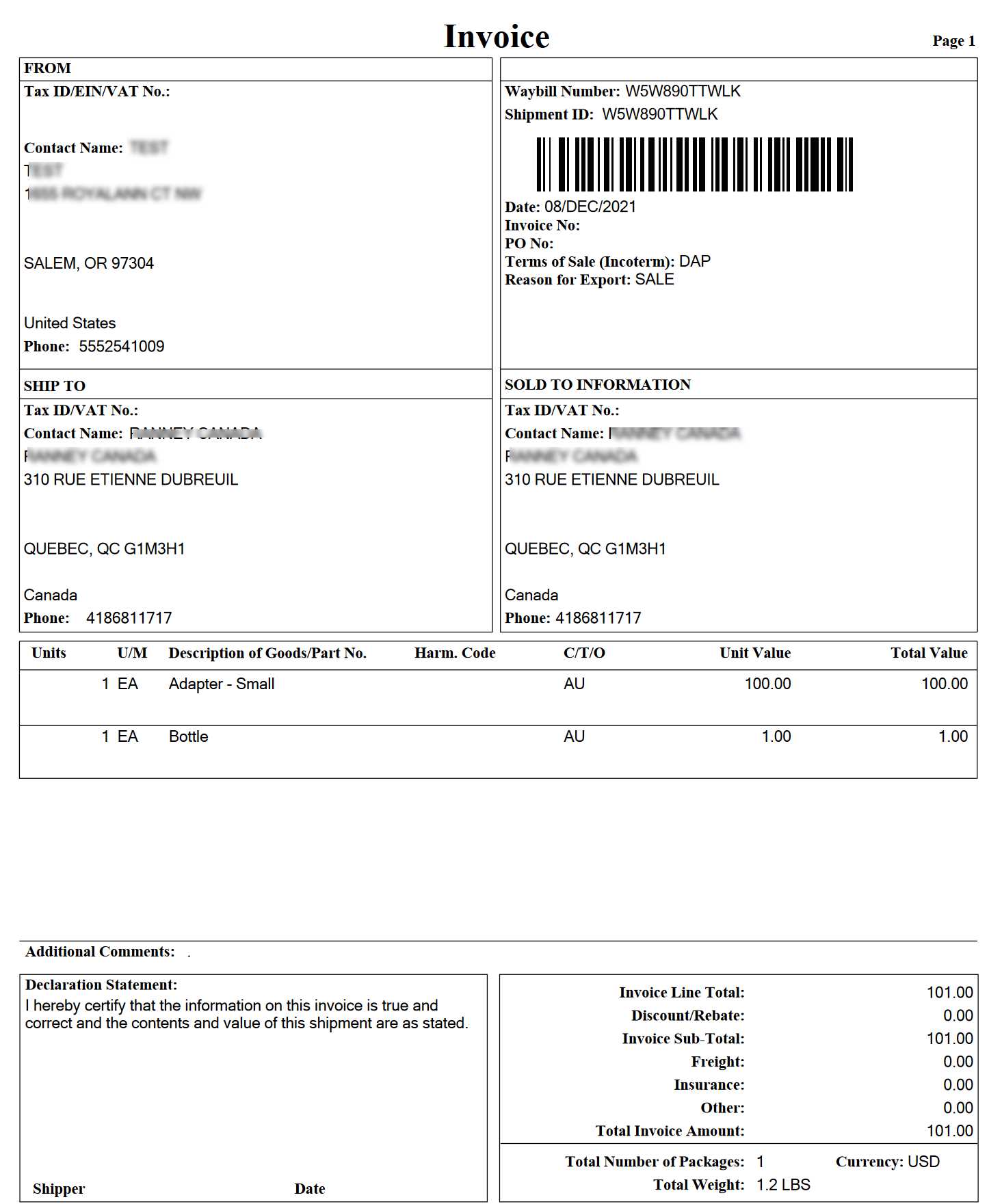
- Item Descriptions: List each item being shipped, including its purpose, material, and quantity. Be as detailed as possible to avoid confusion.
- Value of Goods: Declare the accurate value of each item. This should reflect the price the items are worth in the market.
Step 3: Declare Shipping Terms and Duties
- Shipping Terms: Specify whether the goods are being shipped under a particular set of shipping conditions (e.g., free shipping, buyer pays duties, etc.).
- Duties and Taxes: Indicate whether any taxes or duties will be paid by the sender or recipient, or if these will be handled upon delivery.
Step 4: Double-Check for Accuracy
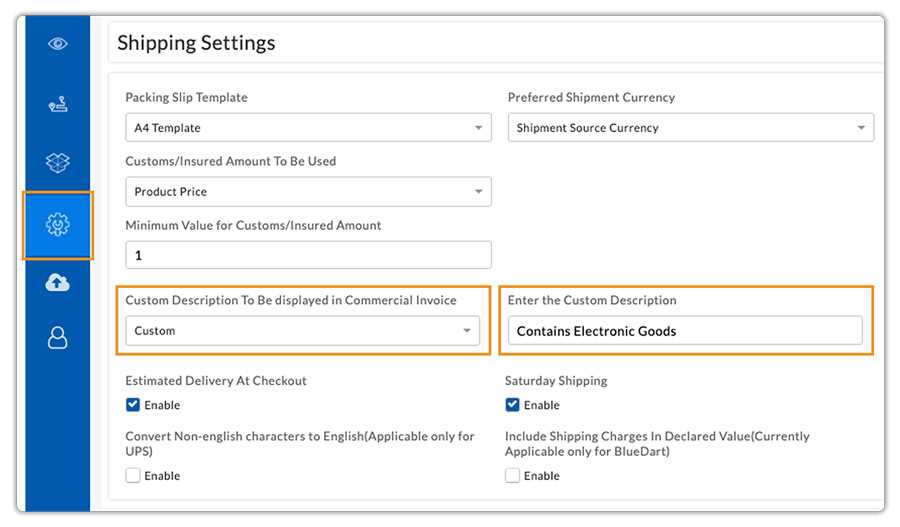
- Proofread: Review the entire form carefully to make sure all information is accurate, including item descriptions, values, and contact details.
- Ensure Completeness: Make sure no sections are left blank. Missing or incomplete information can delay the customs clearance process.
By following these steps and ensuring all the details are correct, your shipment will have a higher chance of passing through customs without issues. Properly filling out these forms helps ensure your goods reach their destination smoothly and on time.
Understanding Duties and Taxes
When shipping goods internationally, it’s crucial to understand how taxes and fees are applied to your shipment. These charges are determined based on the type of products being sent, their value, and the destination country’s regulations. Accurately calculating and declaring these costs upfront can help avoid unexpected expenses or delays during delivery.
Both duties and taxes are assessed by the destination country’s government and vary depending on factors such as the product category, origin, and declared value. By understanding how these fees are calculated, you can better prepare for the overall cost of your shipment.
How Duties Are Calculated
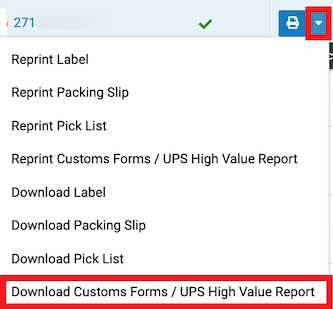
Duties are taxes levied on goods being imported into a country. They are typically calculated as a percentage of the goods’ declared value, but this can vary depending on the type of item. Common factors that affect duty rates include:
- Product Category: Different types of products are subject to different duty rates. For example, electronics may be taxed at a different rate than clothing or food products.
- Country of Origin: Some countries have trade agreements that reduce or eliminate duties on goods from certain regions.
- Declared Value: The higher the value of the goods, the higher the duty might be. Ensure the value is accurate to avoid overpayment or fines.
How Taxes Are Applied
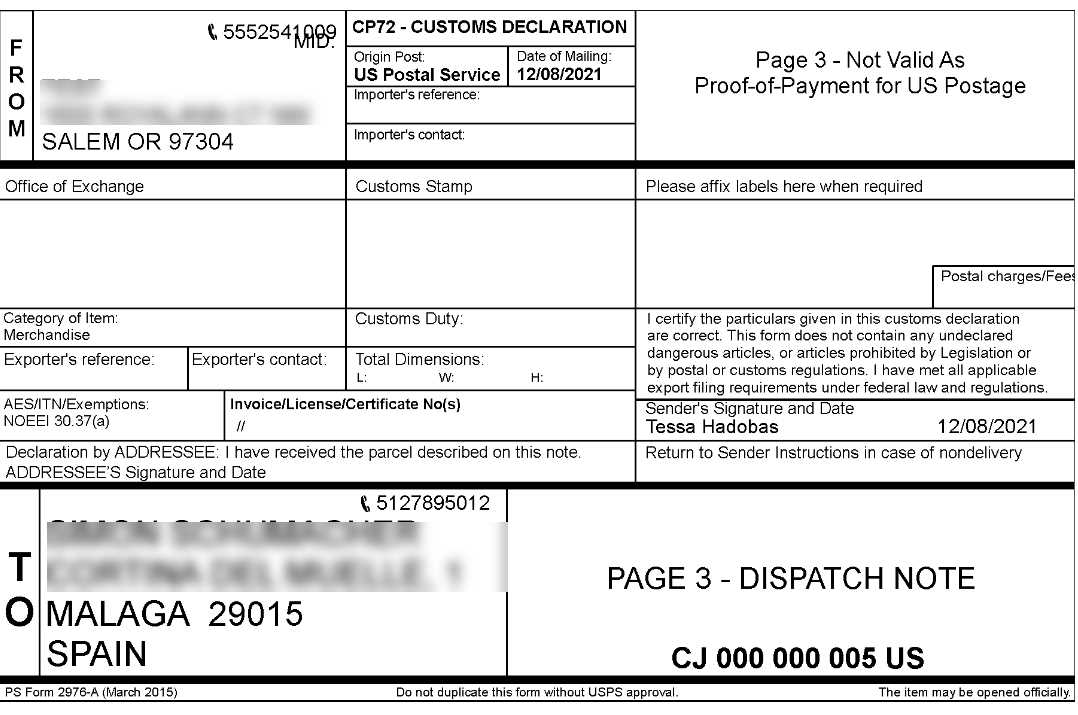
In addition to duties, most countries apply taxes to goods coming in from abroad. These taxes are usually calculated based on the value of the goods and may include sales tax, VAT (Value Added Tax), or other local taxes. These taxes can often be calculated at a flat rate or based on a percentage of the total value of the shipment.
- Sales Tax: In some countries, sales tax is applied to all imports regardless of their type.
- VAT: A common tax applied in many countries, VAT is typically calculated on the total value, including shipping costs and duties.
- Exemptions: Some goods may be exempt from taxes or subject to reduced rates, depending on local laws.
Understanding these fees helps you plan for the total cost of shipping and ensures that there are no surprises when the shipment arrives at its destination. Make sure to factor in duties and taxes when pricing products for international sale or determining shipping costs.
Benefits of Using a UPS Template
When shipping goods internationally, having a standardized form can significantly streamline the process, making it easier to comply with all necessary regulations. A pre-designed form helps ensure that all required information is included, reducing the risk of errors and speeding up the documentation process. By using a structured format, you can avoid missing key details that could delay the shipment.
One of the main advantages of using a well-organized form is consistency. For businesses that regularly ship internationally, using a consistent format saves time and minimizes the chances of mistakes, as all necessary fields are clearly outlined. This consistency also helps create a smoother experience for customers and shipping partners alike.
- Improved Efficiency: Pre-filled sections and clear instructions make completing the form faster and easier, allowing you to focus on other aspects of the shipping process.
- Reduced Risk of Errors: Structured formats guide you to enter accurate and complete information, ensuring that nothing important is left out or incorrectly listed.
- Faster Processing: Clear and correct documentation speeds up the customs clearance process, minimizing the risk of delays or hold-ups at the border.
- Cost Savings: By reducing errors and ensuring compliance, you minimize the risk of fines, penalties, or extra shipping charges caused by improper documentation.
Using a standardized form not only saves time but also helps maintain professional standards for your business. Whether you’re an individual shipper or managing international shipments for a company, relying on a consistent and efficient approach simplifies the entire process and ensures that everything runs smoothly.
UPS International Shipping Requirements
When shipping goods across international borders, it’s important to understand the specific requirements that ensure your shipments are processed smoothly. Each country has its own set of rules and regulations, and meeting these requirements is crucial to avoid delays, fines, or customs issues. Understanding the necessary documentation, labeling, and shipping conditions can help you navigate the process more effectively.
Shipping internationally with a reputable carrier requires detailed attention to various factors, such as the destination country’s rules, the nature of the goods, and the value of the items being shipped. Preparing the right paperwork, labeling the goods correctly, and choosing the appropriate shipping services can make a significant difference in the efficiency and cost of your shipment.
Key Documentation for International Shipments
- Shipping Labels: Ensure the correct shipping label is attached, containing the sender’s and recipient’s information, as well as tracking numbers and service details.
- Value Declaration: Accurately declare the value of the goods for customs assessment and to calculate any applicable duties or taxes.
- Product Description: Provide a detailed description of the items, including the quantity, type, and purpose to avoid delays or confusion at customs.
Shipping Terms and Fees
- Shipping Service Options: Choose the right service for your needs, whether it’s standard, expedited, or express shipping, based on the delivery time and cost you are willing to incur.
- Insurance: Depending on the value of the shipment, consider purchasing insurance for protection against damage, loss, or theft during transit.
- Duties and Taxes: Be aware of any applicable import duties or taxes in the destination country and ensure they are accounted for, either paid by the sender or recipient.
By following these guidelines and understanding the specific requirements of international shipping, you can help ensure that your goods reach their destination quickly and without complications. Proper preparation and attention to detail are key to successful cross-border shipping.
How to Calculate Shipping Costs
Calculating shipping costs accurately is essential for both businesses and individuals to ensure they are prepared for all expenses involved in sending a package. Shipping fees can vary significantly based on several factors such as the weight, size, destination, and shipping speed. Understanding how to calculate these costs will help you choose the best option for your needs and avoid unexpected charges.
To calculate shipping expenses, it’s important to consider both direct and additional costs, such as insurance, handling fees, and potential duties. By factoring in all these elements, you can make a more informed decision about which service and pricing model work best for your shipment.
Factors That Affect Shipping Costs
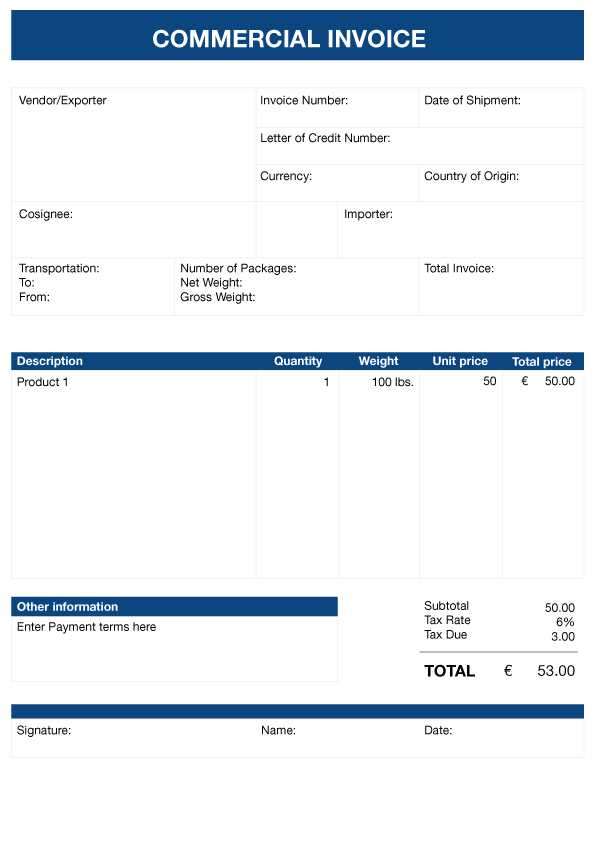
- Weight and Dimensions: The weight and size of the package are the primary factors determining the cost. Heavier or larger packages often incur higher fees.
- Destination: The further the destination, the higher the shipping cost. International shipments typically cost more than domestic ones due to additional handling and distance.
- Shipping Speed: Faster delivery methods, such as express or overnight shipping, are usually more expensive than standard options.
Additional Costs to Consider
- Insurance: If you’re shipping valuable goods, it’s often a good idea to purchase insurance to cover any potential damage or loss during transit.
- Packaging Fees: Some shipping services charge for packaging materials, especially if you use specialized or oversized containers.
- Duties and Taxes: International shipments may require customs duties or taxes to be paid, either in advance or upon delivery, depending on the destination country’s policies.
By carefully considering all the relevant factors and additional fees, you can get an accurate estimate of the shipping costs and make more strategic decisions when sending packages. Many carriers provide online calculators that can give you an immediate cost estimate based on your shipment’s details.
How to Avoid Shipping Delays
Shipping delays can be frustrating and costly, especially when you are trying to meet deadlines or deliver time-sensitive goods. By taking a few simple steps during the preparation and shipment process, you can minimize the risk of delays and ensure that your package reaches its destination on time. Being proactive and well-prepared is key to avoiding disruptions in your shipping schedule.
Understanding the common causes of shipping delays and addressing them beforehand can save you time and money. Ensuring that all required documents are complete, choosing the right shipping method, and double-checking package details are essential to a smooth shipping experience.
Key Tips to Prevent Delays
- Accurate Documentation: Make sure that all necessary paperwork is filled out completely and correctly. Missing or incorrect details can cause delays in processing and clearance.
- Proper Labeling: Ensure that all labels are legible and clearly displayed. Double-check the recipient’s address, contact information, and any special instructions for delivery.
- Choose the Right Shipping Method: Select a service that matches the urgency of your shipment. Opting for expedited or express delivery may reduce the chance of delays, especially for time-sensitive packages.
- Verify Address Information: Confirm that the recipient’s address is accurate and complete. Incorrect addresses are a common cause of delayed deliveries.
- Check for Shipping Restrictions: Some products may be restricted in certain countries or regions. Make sure that your goods comply with the destination country’s import regulations to avoid unnecessary hold-ups.
Additional Precautions
- Schedule Shipments Early: Plan your shipments in advance to account for any unexpected issues that might arise. Shipping earlier than necessary can provide a buffer in case of any delays.
- Track Your Shipments: Use tracking tools provided by the carrier to monitor the progress of your shipment. Early identification of any issues can help you resolve them quickly.
- Stay Informed on Holidays: Be aware of public holidays and non-working days in both the origin and destination countries, as they can affect delivery times.
By taking these steps and staying informed about your shipping process, you can significantly reduce the risk of delays and ensure that your packages arrive on time, every time.
Templates vs Manual Shipping Documentation
When handling international shipments, one of the key decisions is whether to use pre-designed forms or manually fill out all the required paperwork. Both methods have their pros and cons, and the choice depends on factors like the volume of shipments, accuracy requirements, and the level of control you want over the documentation process. Understanding the differences between these two approaches can help you decide which is best suited for your needs.
Pre-designed forms, often referred to as “templates,” offer a structured, consistent way to fill out shipping documents. These forms typically include all the necessary fields and guidance, ensuring that all required details are provided. On the other hand, manually filling out the forms allows for more flexibility but requires a deeper understanding of the specific requirements for each shipment.
Advantages of Using Pre-Designed Forms
- Consistency: Pre-designed forms ensure that each shipment’s documentation follows the same format, reducing the likelihood of missing or incorrect information.
- Time-Saving: With pre-filled sections and clear instructions, these forms can be completed quickly, especially for businesses with a high volume of shipments.
- Minimized Errors: The structured format of templates reduces the chances of mistakes, ensuring all necessary details are included, which can speed up the processing time.
Benefits of Manual Completion
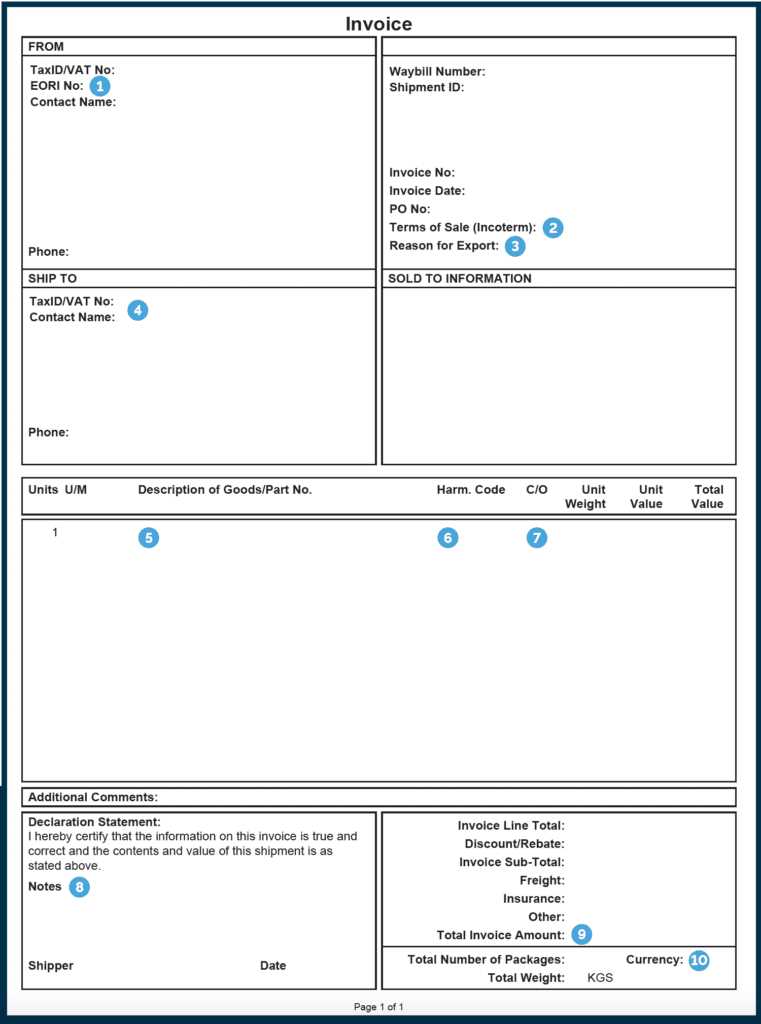
- Flexibility: Manually filling out forms allows you to tailor each document to the specific details of the shipment, offering more control over the information provided.
- Customization: Some shipments may require special handling or unique descriptions. Manual completion allows for more detailed customization, which may not always be accommodated by pre-designed forms.
- Cost-Effective: If you’re shipping infrequently, manually filling out the forms may be more cost-effective than investing in pre-designed templates.
Ultimately, the decision between using pre-designed forms or manually completing the paperwork depends on your shipment volume, the complexity of the goods being shipped, and the importance of accuracy. For businesses with frequent international shipments, pre-designed forms can be a lifesaver in terms of time and consistency, while manual documentation may work better for occasional shipments or unique circumstances.
UPS Shipping Documentation for Small Businesses
For small businesses shipping goods internationally, understanding the required documentation is essential to ensuring smooth and efficient delivery. Accurate paperwork not only helps comply with international regulations but also prevents delays, additional fees, and other shipping issues. For businesses just starting to ship internationally or those that handle only a few shipments, using the right forms and processes is crucial for maintaining a professional and efficient workflow.
Small businesses often face challenges in navigating international shipping regulations, but utilizing the proper forms can simplify the process. With the right paperwork in place, businesses can avoid costly mistakes and streamline their operations, making it easier to focus on growth and customer satisfaction.
Why Proper Documentation Matters for Small Businesses
- Efficiency: Having the right documents ready ensures that the shipping process moves quickly without unnecessary delays at customs.
- Cost Savings: Properly filled out paperwork can prevent fines, returned shipments, or additional charges, which helps minimize costs.
- Compliance: Following international shipping regulations ensures that your business complies with all legal requirements and avoids potential penalties.
Tips for Small Businesses to Manage Shipping Documents
- Be Thorough: Make sure all details about the product, such as its value, description, and origin, are correctly listed. Incomplete or inaccurate information can lead to delays.
- Use Online Tools: Many carriers provide online resources to help businesses generate accurate shipping documents quickly. Take advantage of these tools to streamline the process.
- Stay Informed: Keep up to date with the latest shipping regulations and requirements for each country you’re shipping to. This ensures your shipments are always compliant with local laws.
- Consider Professional Help: If international shipping seems complicated, consider seeking advice from a shipping expert or customs broker to ensure everything is handled correctly.
By using the correct forms and ensuring that all necessary details are included, small businesses can navigate international shipping with confidence, helping them expand their reach and maintain smooth operations without the stress of documentation errors.
Shipping Documentation for E-commerce
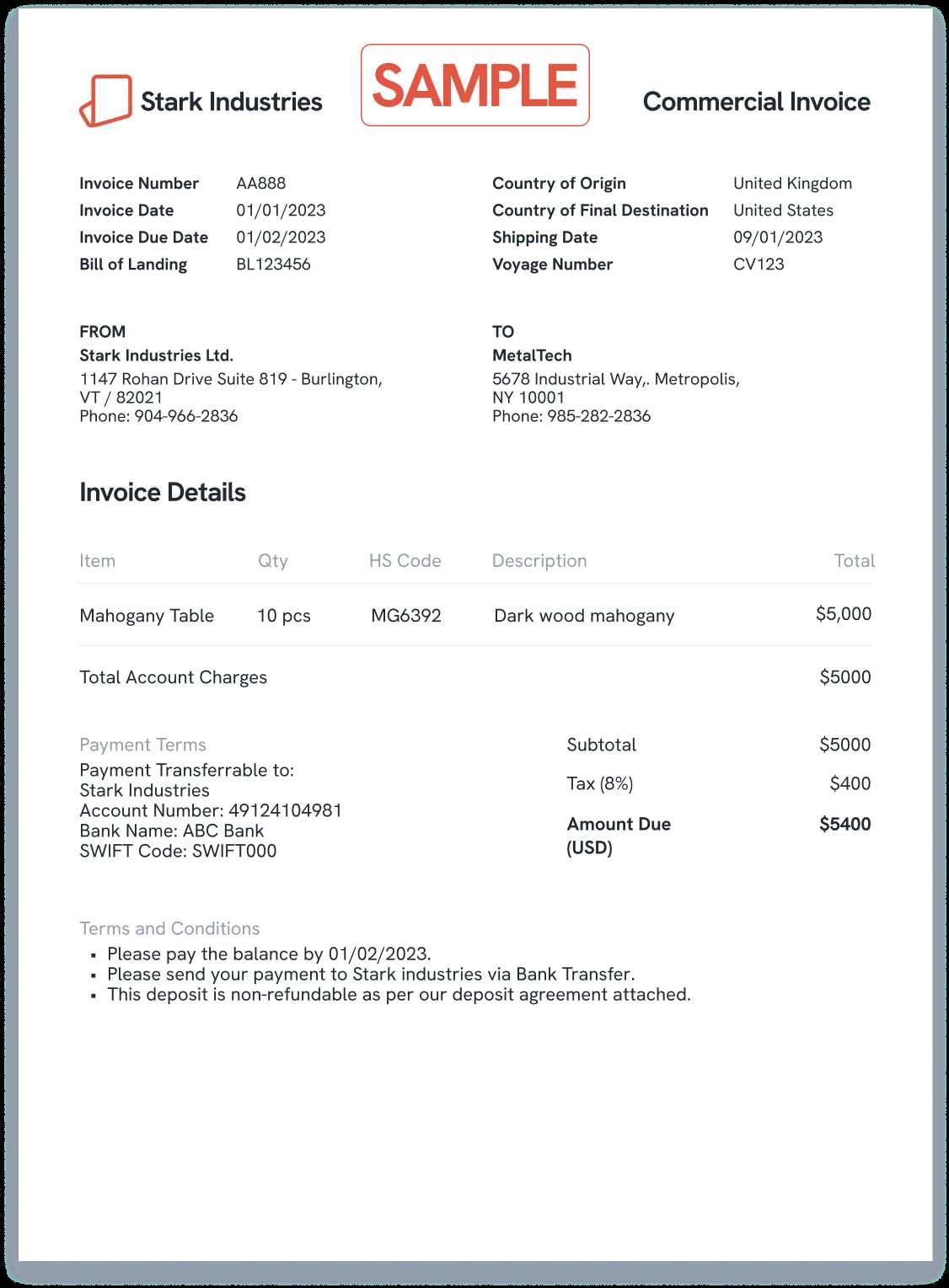
For e-commerce businesses, especially those selling internationally, having the right paperwork in place is crucial for smooth cross-border transactions. Properly completed shipping documents not only ensure compliance with international shipping regulations but also help prevent delays, extra costs, and complications at customs. For online retailers, having an organized, accurate form for each shipment is a key part of maintaining efficiency and building trust with customers.
E-commerce businesses need to be particularly mindful of the details in their shipping documentation, as these forms often serve as the first point of contact with international authorities. By using a consistent and well-structured document, businesses can streamline their shipping process, reduce the risk of errors, and keep customers satisfied with timely deliveries.
Why E-commerce Businesses Need Organized Shipping Forms
- Regulatory Compliance: Many countries require specific details about imported goods, such as their value, country of origin, and purpose. Ensuring your forms include all required information helps you avoid fines and delays.
- Improved Efficiency: Having a standardized document for each shipment saves time. This allows e-commerce businesses to process orders faster, which is essential for maintaining customer satisfaction and competitive pricing.
- Enhanced Customer Experience: Properly filled-out documents minimize the risk of shipping delays and customs holds, ensuring that your customers receive their orders in a timely manner.
Best Practices for E-commerce Shipping Documentation
- Clear and Accurate Descriptions: Provide precise descriptions of the items being shipped. Vague or incomplete information can lead to delays or rejections at customs.
- Proper Classification: Ensure that the goods are properly classified, whether as gifts, samples, or commercial goods. This helps with duty assessment and smooth clearance.
- Include All Relevant Information: Ensure that the value, quantity, and weight of the goods are clearly stated on the document. Missing details can cause unnecessary delays in the shipment’s progress.
- Double-Check Addresses: Always verify the recipient’s address and contact information to avoid misdelivery or delays in the shipping process.
For e-commerce sellers, having a consistent, structured approach to completing shipping forms is essential to running an effective, customer-friendly operation. By using standardized shipping documentation, businesses can improve their efficiency, reduce potential issues with international shipments, and ensure their customers have a positive shopping experience.
UPS and International Trade Regulations
When engaging in global commerce, understanding the legal frameworks and regulations that govern international trade is crucial for ensuring smooth, efficient transactions. Shipping companies play a key role in helping businesses navigate these complex regulations by offering services that comply with import and export laws. For businesses sending goods internationally, it’s important to understand how carriers assist with meeting these rules, ensuring that shipments are processed without unnecessary delays or legal issues.
International trade regulations vary from country to country, and these rules govern everything from product classification to taxes and fees. Shipping providers like UPS assist in complying with these regulations by offering tools and services that ensure shipments are handled according to each destination’s unique requirements. Having a clear understanding of these guidelines will help businesses prevent disruptions and manage their global operations effectively.
Key Aspects of International Trade Regulations
| Regulation | Description | Impact on Shipping |
|---|---|---|
| Import/Export Documentation | Requirements for paperwork that accompanies goods during shipment, detailing contents, value, and origin. | Failure to complete documents accurately may result in delays or fines. |
| Tariffs and Duties | Taxes imposed on goods imported into a country, based on their value and type. | Incorrect tariff classification can lead to higher fees or delayed clearance. |
| Prohibited and Restricted Goods | Certain goods may be prohibited or restricted in some countries due to safety, security, or political reasons. | Shipping such goods without proper clearance could lead to confiscation or fines. |
| Country-Specific Requirements | Each destination country has its own set of rules regarding product standards, packaging, and labeling. | Non-compliance with country-specific rules can lead to rejected shipments or increased costs for re-processing. |
How Shipping Providers Help with Compliance
- Automated Documentation Tools: Shipping companies often provide online tools that help businesses complete the necessary forms according to each country’s trade regulations.
- Regulatory Updates: Providers stay up-to-date on changing trade laws and ensure that businesses are informed of any new regulations affecting their shipments.
- Customs Clearance Support: Many carriers offer support in clearing shipments through customs, ensuring that all required information is submitted and reducing the likelihood of delays.
- Labeling and Packaging Assistance: Shipping providers can advise businesses on packaging and labeling requirements to avoid rejections and ensure compliance with destination country standards.
By understanding the complexities of international trade regulations and working with experienced shipping providers, businesses can ensure that their products are delivered smoothly, within compliance, and without unnecessary interruptions. Proper adherence to trade rules not only ensures legal compliance but also build
How to Update Your Shipping Information
When shipping goods internationally, it is essential to keep your shipping records up-to-date to ensure that all necessary details are accurate and compliant with regulations. This includes updating information related to the products you’re sending, their values, and the destination country’s requirements. Keeping this data current helps avoid delays, additional fees, and potential rejections of shipments at borders.
Regular updates to your shipping documents are critical, especially when your inventory changes or when you expand to new international markets. Keeping your shipping details accurate ensures smooth delivery and helps build a strong relationship with international customers. Below are key steps for maintaining and updating your shipping information.
Steps to Keep Your Shipping Details Updated
- Review Product Descriptions: Ensure that the product descriptions and classifications are accurate. Changes in product lines or inventory should be reflected in your documentation.
- Update Shipping Values: Always make sure that the value of each shipment is correctly listed, including any changes in pricing or special discounts offered to customers.
- Ensure Correct Packaging Details: Shipping standards and packaging requirements may vary by country. Regularly review the packaging information to comply with destination country laws.
- Check Address Information: Update the shipping addresses, including any changes to recipient details or new destinations, to ensure that shipments arrive correctly and on time.
- Track Regulatory Changes: Stay informed about changes to international shipping regulations, including any new documentation requirements or restrictions imposed by certain countries.
Common Information to Update Regularly
| Category | Details to Update | Why It’s Important |
|---|---|---|
| Product Information | Description, classification, and quantity | Accurate product details help avoid discrepancies and ensure shipments pass through customs without issues. |
| Value | Price and tax information | Incorrect values can lead to fines or delays due to incorrect duty or tax assessments. |
| Recipient Information | Shipping address and contact details | Up-to-date addresses ensure timely deliveries and prevent misdirected shipments. |
| Packaging Information | Type and dimensions of packaging | Packaging requirements differ by country. Inaccurate details can cause customs delays or rejections. |
Regularly reviewing and updating your shipping records not only ensures smooth operations but also builds trust with your customers by guaranteeing accurate deliveries. Keeping your shipping information current is an essential part of successful international business operations, allowing you to avoid costly mistakes and enhance your global reach.
Tracking Shipments with Shipping Documentation
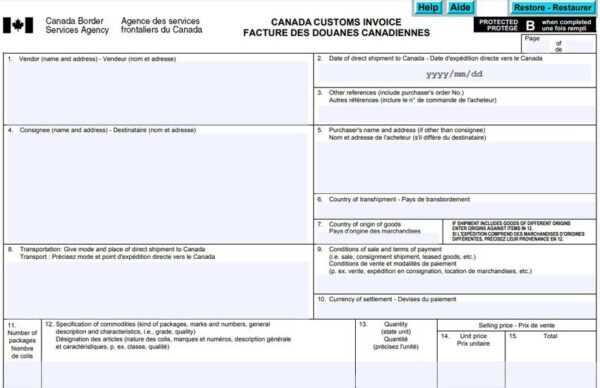
Accurate shipping documentation is essential not only for the smooth processing of goods at borders but also for tracking shipments throughout their journey. When shipping products internationally, proper records allow businesses and customers to track the progress of their packages, ensuring timely and secure delivery. Having the right shipping details in place makes it easier to monitor shipments and resolve issues if they arise during transit.
With proper documentation, tracking a package becomes more straightforward. This information is typically linked to tracking numbers provided by the carrier and can be used to get real-time updates on the shipment’s status. Ensuring that the documentation includes key details such as package contents, value, and destination can also help prevent delays and issues that may arise during the tracking process.
How Shipping Documentation Helps with Tracking
- Real-Time Updates: Properly filled-out forms are linked to tracking systems that offer real-time updates on where the package is located during transit.
- Clear Package Identification: Detailed documentation, including clear descriptions and accurate values, helps ensure the shipment is easily identified by both the carrier and customs officials.
- Dispute Resolution: If any issues arise during shipment, having complete and accurate shipping records helps resolve problems quickly by providing necessary information to the carrier and customs authorities.
Essential Information for Effective Tracking
- Tracking Number: The tracking number is crucial for monitoring the shipment’s status in real time. Make sure this number is clearly recorded in all relevant documentation.
- Shipment Contents: A clear description of the goods helps carriers and customs officials identify the package and track it accurately.
- Destination Address: Correct and up-to-date recipient details ensure that the package reaches the right destination without delays or misdeliveries.
- Value of the Goods: Accurate values are necessary for determining any applicable fees and taxes, which can affect the shipment’s progress through customs.
Having proper shipping documentation not only ensures a smooth transit process but also facilitates easy tracking, enabling businesses to stay informed and resolve issues if they arise. Keeping all shipping records up to date and complete is an integral part of efficient international shipping operations.
How to Resolve Shipping Issues Quickly
When shipping goods internationally, delays and complications can occur due to discrepancies in the documentation, incorrect declarations, or misunderstandings about a country’s import regulations. These issues can slow down the delivery process and lead to extra fees or even the return of shipments. It’s important to know how to resolve these challenges efficiently to minimize disruption and ensure that goods reach their destination without unnecessary delays.
In order to resolve shipping issues quickly, businesses should follow a clear set of steps that involve thorough preparation, immediate action, and communication with relevant parties. Having a proactive approach can significantly reduce the time spent dealing with any obstacles that arise in the shipping process.
Steps to Resolve Shipping Issues Quickly
- Review Documentation: Carefully check all shipping forms, product details, and recipient information. Ensure that everything is accurate and complete. Errors in paperwork are often the root cause of delays.
- Contact the Carrier: If there is a problem with the shipment, reach out to the carrier immediately. They can provide real-time information on the status of the package and inform you of any actions required to clear up the issue.
- Provide Additional Information: If customs or regulatory authorities request additional information, respond quickly and provide the necessary documents or clarification to avoid further delays.
- Track the Shipment: Utilize tracking systems to monitor the shipment’s progress. Knowing the current location of the goods can help you anticipate where problems might occur and take action to prevent further delays.
- Update Records: If you notice discrepancies in your shipping records or documentation, update them immediately to reflect accurate and current details. This includes values, descriptions, and recipient information.
Key Considerations for Quick Resolution
- Timeliness: The faster you identify the issue, the quicker you can begin resolving it. Delays in taking action may result in further complications.
- Clear Communication: Stay in constant communication with the carrier, customs authorities, and any third-party logistics providers to ensure everyone involved is aware of the situation.
- Accurate Documentation: Maintaining accurate, up-to-date shipping documentation is the key to preventing issues in the first place. Ensure that all product details, values, and classifications are correct and match the carrier’s records.
- Regulatory Knowledge: Familiarize yourself with the specific import/export regulations of the countries you are shipping to. This helps to avoid misunderstandings and prevents errors that may lead to delays.
By following these steps, you can resolve most shipping issues quickly and efficiently, minimizing any impact on delivery times and costs. The more prepared and informed you are, the easier it will be to overcome obstacles and keep your international ship